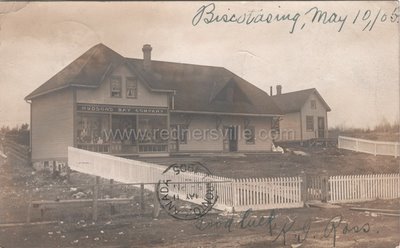Like the country storekeepers at the
Rednersville Country Store in the good old days, we love to swap stories about the history of Prince Edward County, and yes, we still gossip about the neighbours if you stop by the store for a visit. Many of the folks around the County, and most of our neighbours up and down Rednersville Road, have access to the internet now. So they sometimes visit our
online antiques gallery, which is now filled with antiques and memorabilia.
Local folks and visitors from around the world read this
Rednersville Loyalist news rag, or blog as the younger folks call it, where we post stories of interest to those who know Prince Edward County, or might like to. On this blog, we've posted stories about the
loyalist history of the County and, closer to home, a story about the night this store was
struck by lightning, an excerpt from a book by local author, photographer and storyteller, Janet Kellough,
The Legendary Guide to Prince Edward County.
But there's something about the spoken word that makes storytelling so interesting. So it's our pleasure to spread the word about the County's own weekly podcast, featuring Janet Kellough and Don Edwards,
The Prince Edward County Podcast. To listen to a "podcast" you don't need to have one of those iPod mp3 players the kids all want for Christmas, because you can listen to the stories on your computer by just clicking on a link. It's easy, and well worth a listen.
We really enjoyed Prince Edward County Podcast #4 --
Rum-Runners Edition, which features the voice of author C.W. Hunt describing where the booze came from, and one smuggler's hair-raising encounter with the U.S. Coast Guard. Then, Janet tells the tale of Main Duck Island and how one Milford family indirectly benefited from rum-running. The storytelling is captivating, and the production of the podcasts is very professional. We'll be listening to their podcasts every week, here in the comfort of our store, surrounded by antiques and memorabillia that evoke memories to complement these stories of Prince Edward County.
We should probably get together with Don and Janet to talk about some of the stories heard and told over the years in the
Rednersville Country Store.








